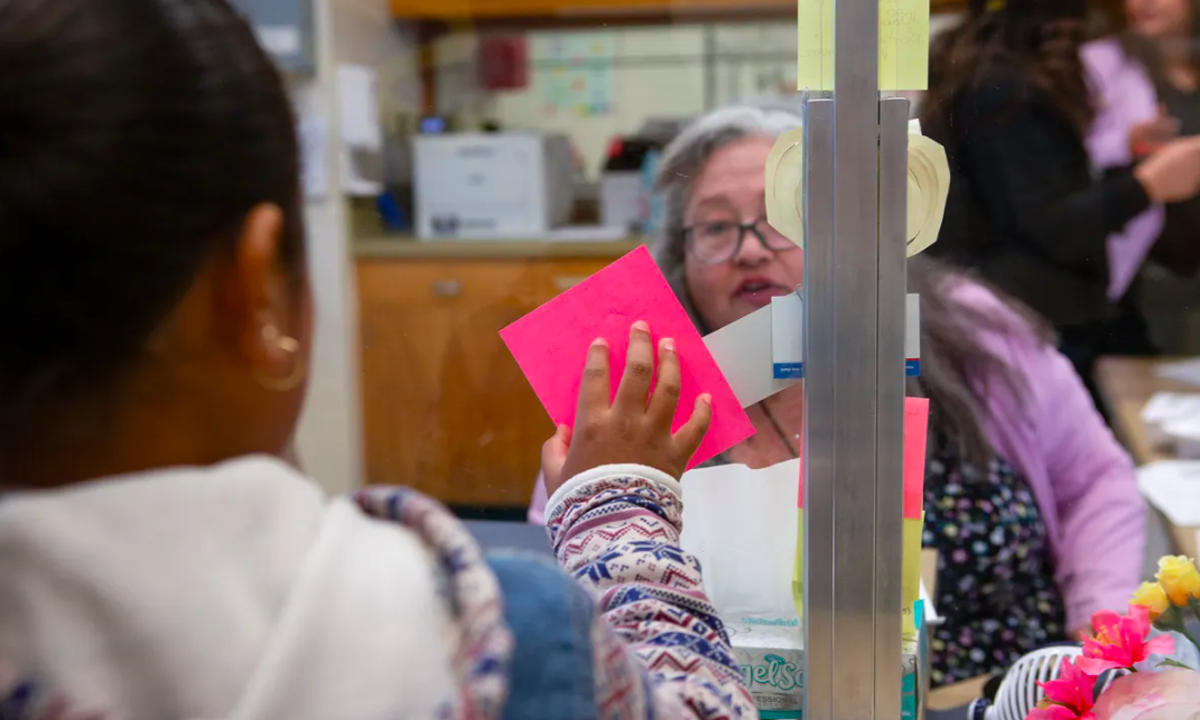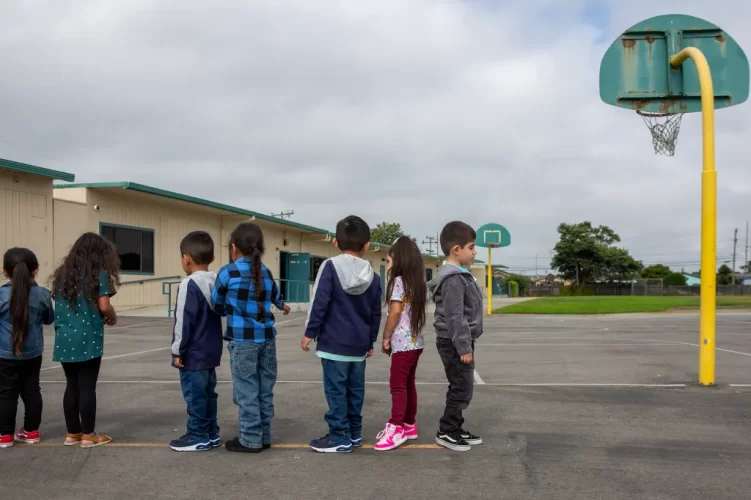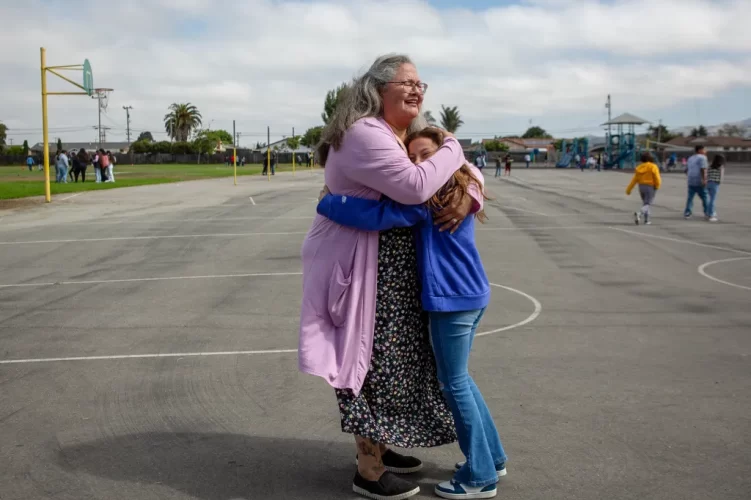Soaring Chronic Absenteeism in California Schools is at ‘Pivotal Moment’
Nearly a third of K-12 students statewide were chronically absent in 2020-21, more than three times the pre-pandemic rate.

Get stories like these delivered straight to your inbox. Sign up for The 74 Newsletter
As a new school year gets underway in California, districts are desperately trying to lure thousands of missing, tardy and truant students back to the classroom in what many view as a pivotal moment for education in California.
In 2021-22, 30% of students in California’s public schools were chronically absent, an all-time high and more than three times the pre-pandemic rate. Advocates fear that unless schools can reverse the trend, so many students will fall behind that they may never catch up.
“This is a crisis, and it’s not going to change until we do everything we can to get kids back in school 100%,” said Heather Hough, director of Policy Analysis for California Education. “What we all fear is that this will become the new normal.… It is hard to overstate the importance of this issue, and it is absolutely a pivotal moment.”
Before the pandemic, about 10% of students in California’s public schools missed at least 10% (or 18 days) in a school year, which the state defines as chronically absent. But COVID-related school closures, remote learning and quarantines have created a new habit for millions of families: optional, not mandatory, daily school attendance.
Even though California law requires all children ages 6 through 18 to attend school every day, nearly 2 million students were chronically absent in 2021-22, the most recent year data is available. Nearly every group of students had high rates of absenteeism, but the highest rates were among kindergartners. Kindergartners who are Black, Pacific Islander or have disabilities all had rates of 50% or higher.

Students’ specific reasons for missing school are varied. Lack of transportation is among the most common reasons, but sometimes students have to look after younger siblings or go to work. In some cases, students stay home because they’re being bullied or don’t like their teachers. After COVID, some parents have become overly cautious about sending their children to school with minor ailments.
Personal connections have made all the difference at an elementary school in Salinas — thanks in part to a school secretary the students call “Miss Cathy.”
As students and their parents file into Loma Vista Elementary every morning, Catalina Cisneros greets them by name, gives them hugs and catches up in Spanish, the predominant language in that part of the city. Cisneros, a Salinas native, said she understands the struggles that families face as they raise their children while working long hours, sometimes starting their days at 4 a.m. in the nearby lettuce fields.
“I treat the parents how I’d like to be treated, with empathy and compassion,” said Cisneros, who started working at Loma Vista Elementary three years ago. “We have to, because we want the kids in school. The parents want their kids in school, too. They’re doing the best they can, and sometimes it’s hard. I get that.”

Absenteeism has myriad negative impacts. For students, they’re more likely to fall behind academically, drop out and not graduate. For schools, lower attendance means less revenue from the state, which bases its funding on how many students show up every day. For teachers, poor attendance means half–empty classrooms, with some students who are weeks or months behind their peers.
There are legal implications, as well. In extreme cases, local district attorneys can get involved, citing and fining parents or students who persistently flout the mandatory attendance law.
Alarmed at the extent of the crisis, the Legislature is intervening. The Assembly recently asked Hough’s organization, Policy Analysis for California Education, to study the issue and come up with recommendations.
The findings could lead to legislation that would address the issue directly. A few possibilities include increased accountability at the local level, such as offering districts more incentives to get students back in class; better data collection; and broader efforts to make school a more attractive place for students to be.
In response to the pandemic, the state has already invested billions in initiatives aimed at boosting student engagement, including:
- After-school and summer programs.
- Improved school meals.
- Community schools, which offer social services to students, their families and others in the neighborhood.
- Mental health counselors, on-campus wellness centers and staff training on social-emotional learning.
- Expanded school bus services.
It’s unclear how much impact these programs have had so far, or if they’ll survive once COVID relief funding expires or the state budget tightens. But in any case, the state needs to do more, said Assembly Budget Chair Phil Ting, a Democrat representing San Francisco.
“It’s worrisome that kids are still staying home from school in record numbers,” Ting said. “Our investments in universal school meals, after-school programs and home-to-school transportation have not been enough to bring students back.”
Ting said he’s hopeful that studying the issue will lead to solutions.
“When children don’t regularly attend class, they fall behind on their lessons, and they are more likely to drop out – some as early as kindergarten. The implications of a less-educated generation are great,” he said. “We need to understand why attendance is below pre-COVID levels, so that we can better direct state resources and education leaders where they’ll be most effective in re-engaging students.”
Absenteeism has been so high in the Salinas City Elementary District – approaching 40% last year – that the district convened a group of teachers, administrators, counselors and others to brainstorm how to get students back in the classroom. Among the steps is encouraging office staff to be friendly, welcoming and non-judgmental, even when students are late or absent for long periods. Another step is talking to the families and students who have struggled the most with attendance, and addressing the specific reasons they can’t get to school.
In some cases, families said the bus pickup time was too early. So the district purchased a fleet of vans that could do shorter bus routes, allowing for later pickup times. Other families said their children didn’t want to go to school because they felt anxious or bullied, so the district connected students with counselors, tried to end the bullying and worked to improve the overall campus climate. Some students said they simply hate school, so the district arranged for them to transfer to a school that might be a better fit.
The efforts appear to be working. In 2021-22, the district’s chronic absenteeism rate was 38%, almost triple the pre-pandemic rate and well above the state average. By January, it had fallen to 29%, and last week it had fallen to 21%. Loma Vista, which had one of the district’s highest absenteeism rates – 46% in 2021-22 – saw its rate drop to just over 24% so far this school year.
The numbers are important, said Superintendent Rebeca Andrade, but students’ success is more important. The pandemic was particularly hard on the community, and families in the low-income agricultural region have struggled to rebound.
“To see so many kids missing school – it wasn’t just frustrating. It was heartbreaking,” Andrade said. “School is supposed to be a safe place, and too many students were missing that. We knew we had to do something.”
Stemming absenteeism ultimately may be up to individual schools and staff, said Hedy Chang, executive director of the advocacy group Attendance Works.
For starters, health standards need to change, she said. Schools should promote better preventative care for students, but also convince parents that COVID is no longer a public health emergency and children should not miss school “for every sniffle or tummy ache.”
But more importantly, school staff must work directly with families to address the specific reasons for absenteeism, taking into account language and cultural barriers, and build strong personal relationships with parents and students, she said.
“We need to create those deep connections, so every child knows that there’s an adult waiting with open arms to welcome them to school,” Chang said. “That needs to be the new normal.”
Maria Perez, a parent at Loma Vista, said she wakes up at 5:30 a.m. to get her fourth grade daughter to school in time to be at her job at a Castroville fruit distribution center by 8 a.m. It doesn’t help, she said, when her daughter oversleeps or doesn’t feel well.
“Sometimes it’s a challenge. I tell her, it’s going to be a good day, it’s alright, don’t worry,” Perez said. “It’s important she goes to school because I want her to meet people, to make friends, to learn, to be someone in life.”
Parent Leslie Naranjo, who dropped four of her six kids off at Loma Vista on a recent morning, said getting out the door every day can be a Herculean task. She hasn’t always been as punctual as she’d like to be, but she’s trying: She now puts out her kids’ clothes the night before, bought a shoe rack so they’re not constantly searching for lost shoes, and has them shower before bed instead of in the morning.
It’s all helped, she said, but it’s Miss Cathy’s smiles that have made the difference.
“When we come in, she always says, ‘Hi!’ She’s always so happy to see us,” Naranjo said. “The kids see she’s excited to be here, so they get excited. It works.”
This story was originally published at CalMatters.
Get stories like these delivered straight to your inbox. Sign up for The 74 Newsletter

